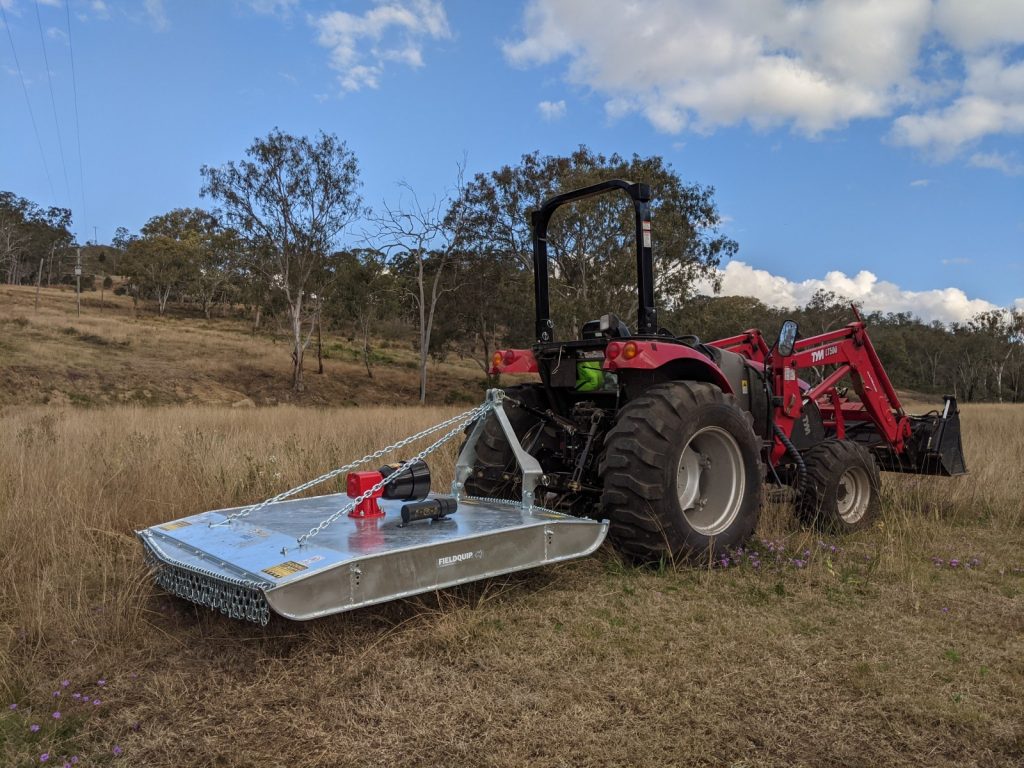I’ve been considering slashers for a long time, and have finally ordered and taken delivery of a 6′ FieldQuip Sabre 1800. It’s the base model from FieldQuip, but they are made locally in Australia – about 1 hr drive from the farm! I won’t be into slashing pasture much – that’s not the main purpose for it in my case. I’m more interested in slashing lantana, to minimise the use of herbicide. My neighbour John reckons lantana will cark it if slashed a number of times. Its a fairly large model for my tractor, but isn’t overly heavy (like a very heavy duty one this size would be). Considering my place isn’t smooth I’d prefer to have a wide slasher and drive slow as required, rather than narrow and fast.
Also purchased a Clark Ripper with a pipe layer attachment. Its a medium size, and the layer will do 50mm pipe fine (perhaps a little bigger, but I won’t be needing anything more). Should be useful for breaking up clay, to improve moisture penetration, without turning over and tilling the soil.


